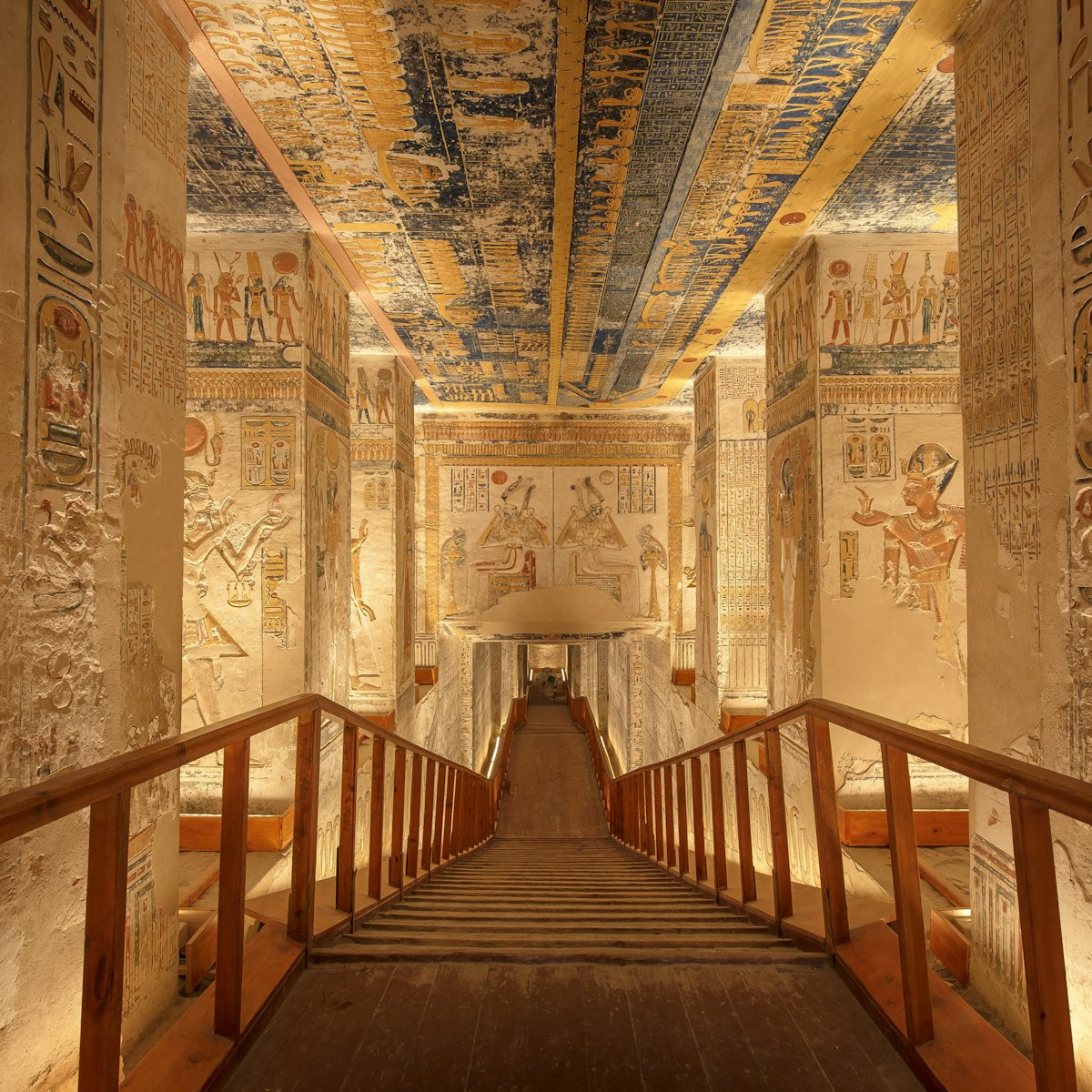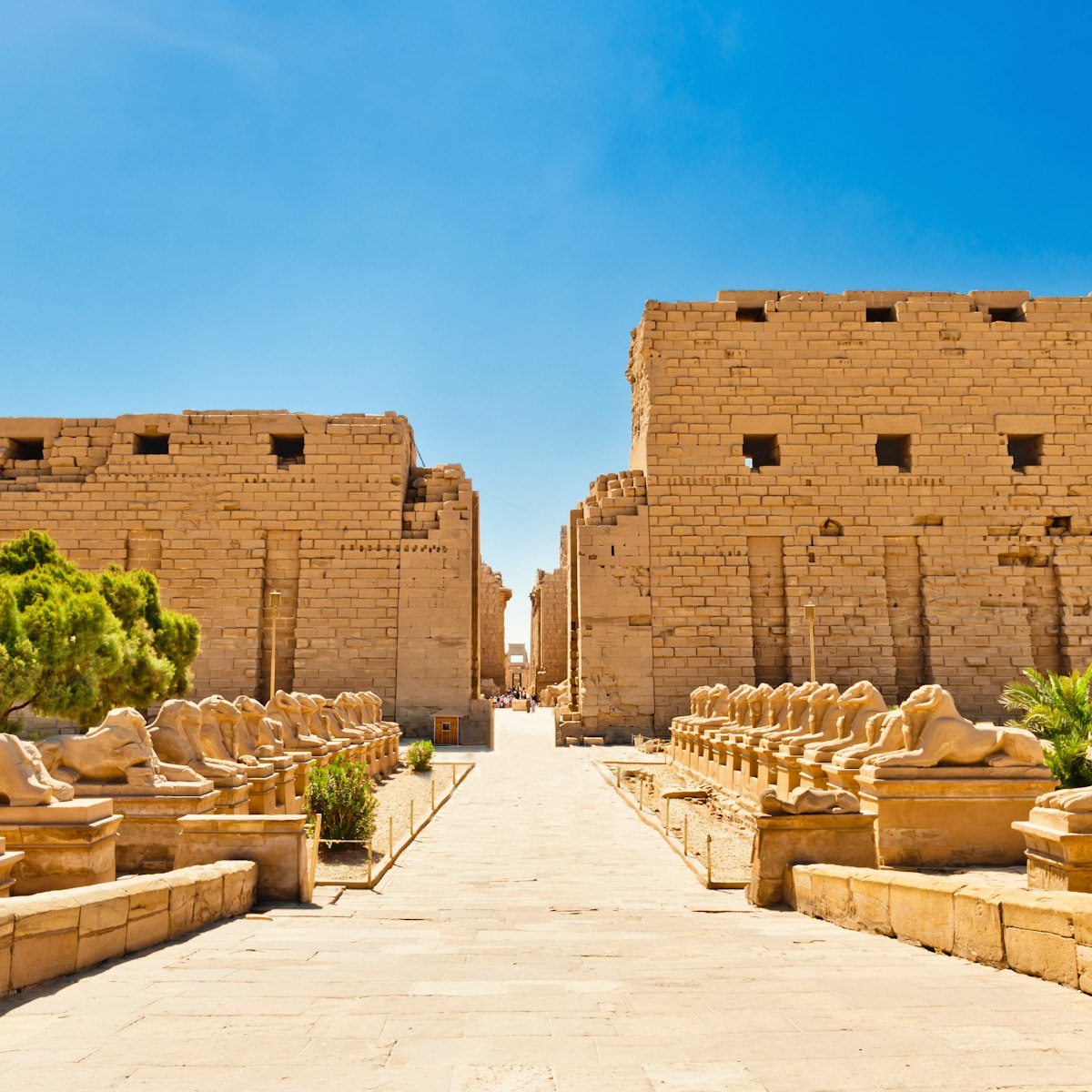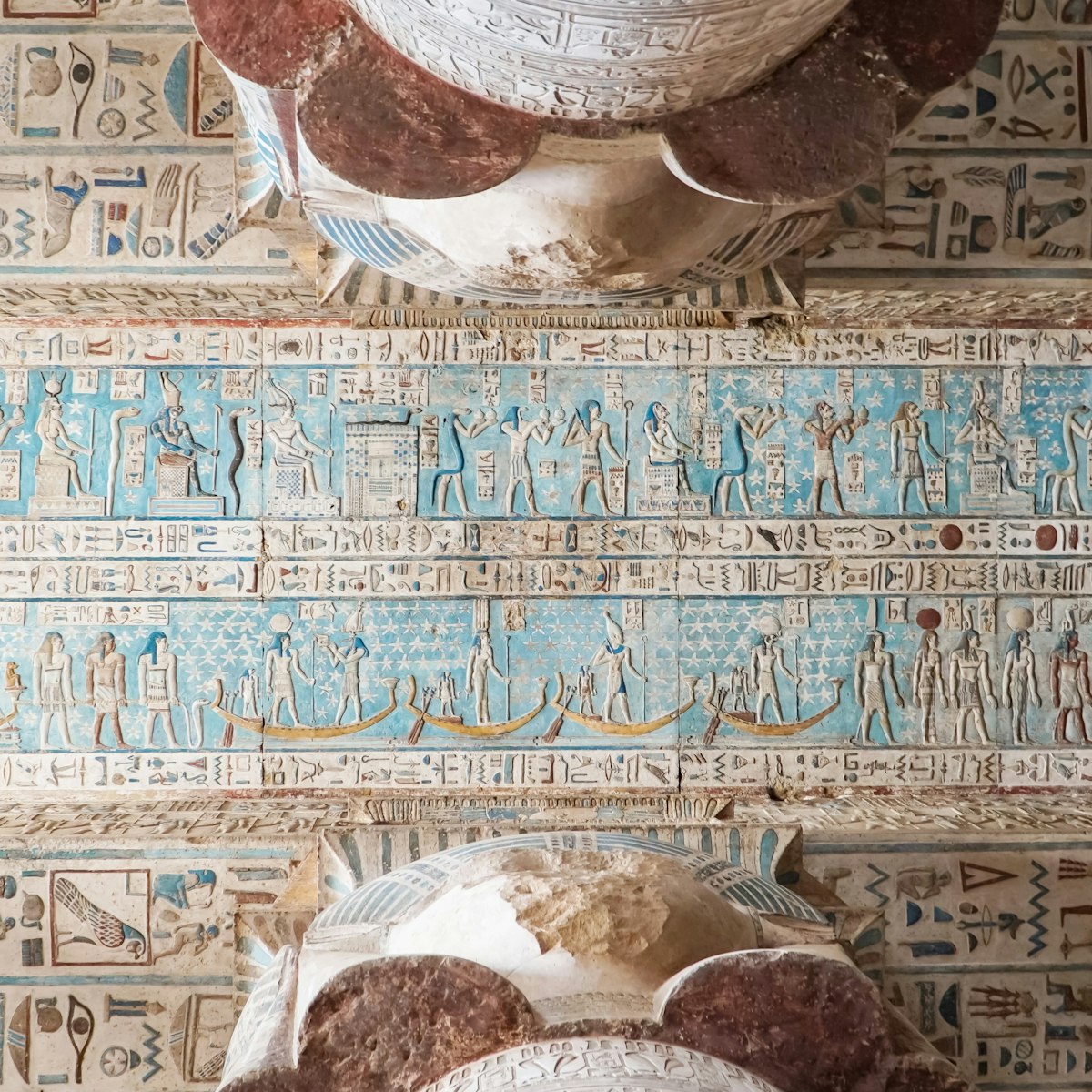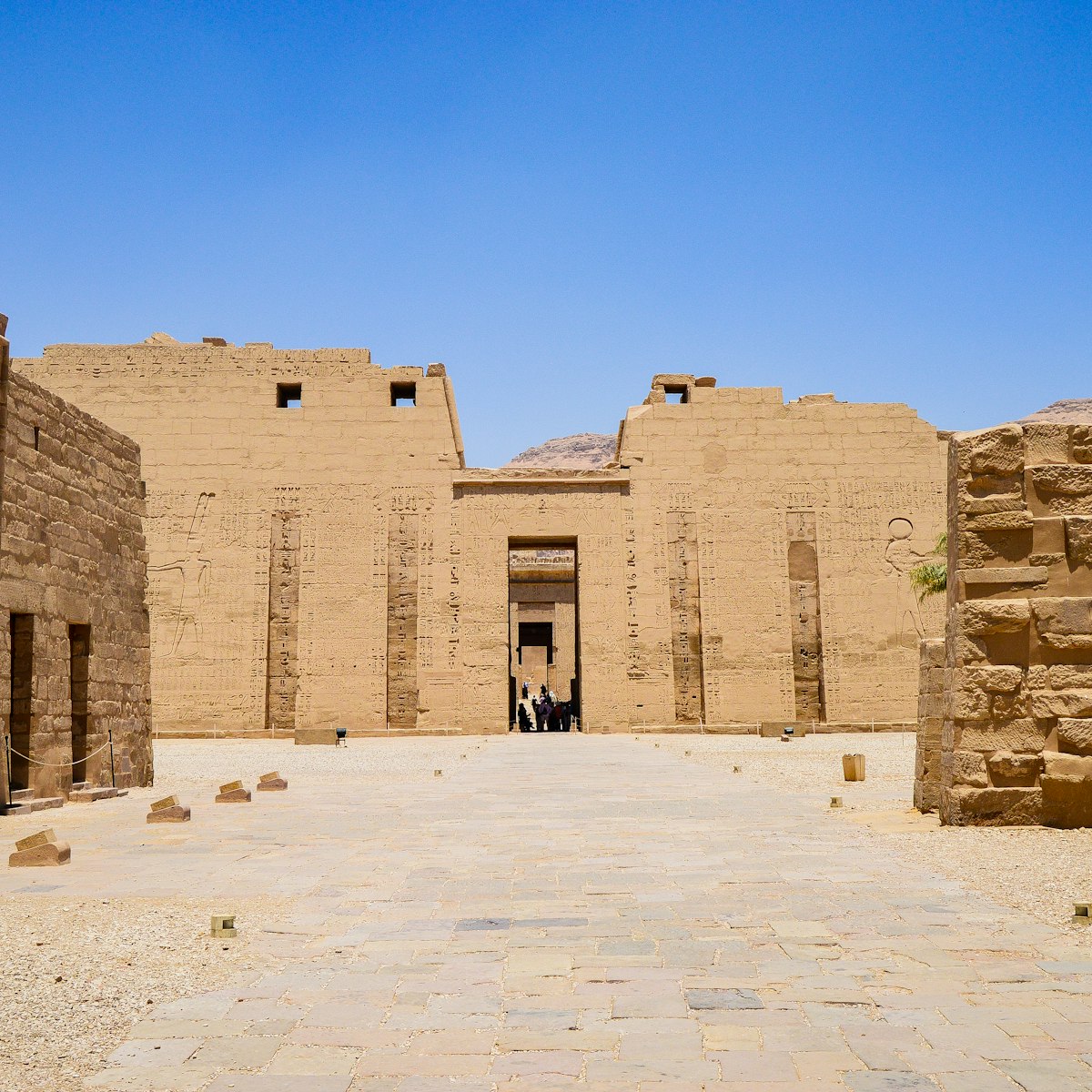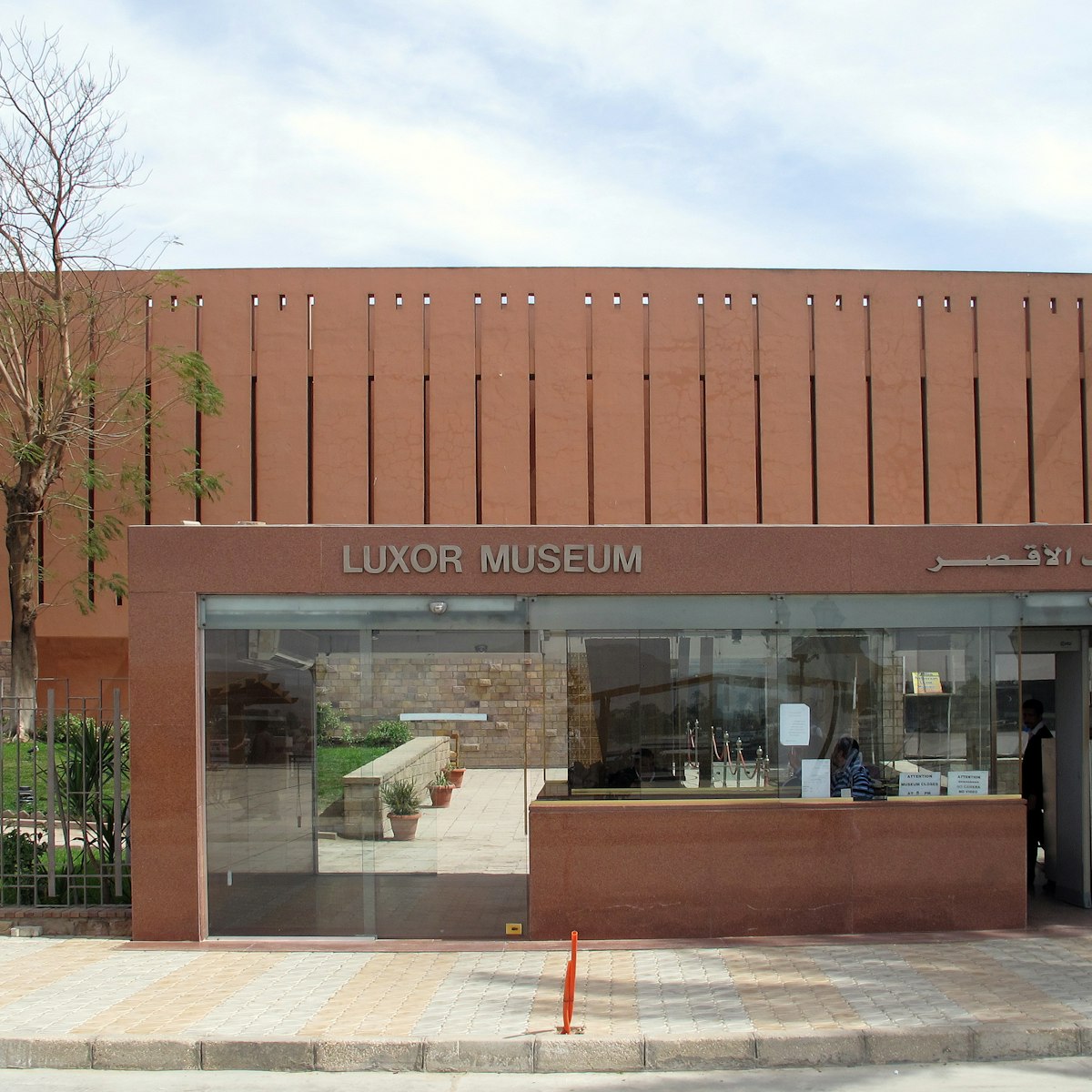Although only the burial chamber is decorated, this tomb, tucked away in the West Valley, is noted for its scenes of Ay hunting hippopotamus and fishing in the marshes (scenes usually found in the tombs of nobles not royalty), and for a wall featuring 12 baboons, representing the 12 hours of the night, after which the West Valley or Wadi Al Gurud (Valley of the Monkeys) is named.
Although he succeeded Tutankhamun, Ay’s brief reign from 1327 to 1323 BC tends to be associated with the earlier Amarna period and Akhenaten (some Egyptologists have suggested he could have been the father of Akhenaten’s wife Nefertiti). Ay abandoned a grandiose tomb in Amarna and took over another here in the West Valley. The valley played an important part in the Amarna story, as it was chosen as a new burial ground by Amenhotep III for his own enormous tomb (KV 22, part way up the valley), and his son and successor Akhenaten also began a tomb here, before he relocated the capital at Amarna, where he was eventually buried.
It seems Tutankhamun also planned to be buried in the West Valley, until his early death saw his successor Ay ‘switch’ tombs. Tutankhamun was buried in a tomb (KV 62) in the traditional section of the Valley of the Kings, while Ay himself took over the tomb Tutankhamun had begun at the head of the West Valley. The tomb is accessed by a dirt road that leads off from the car park at the Valley of the Kings and winds for almost 2km up a desolate valley past sheer rock cliffs. Recapturing the atmosphere (and silence) once found in the neighbouring Valley of the Kings makes it worth the visit.

